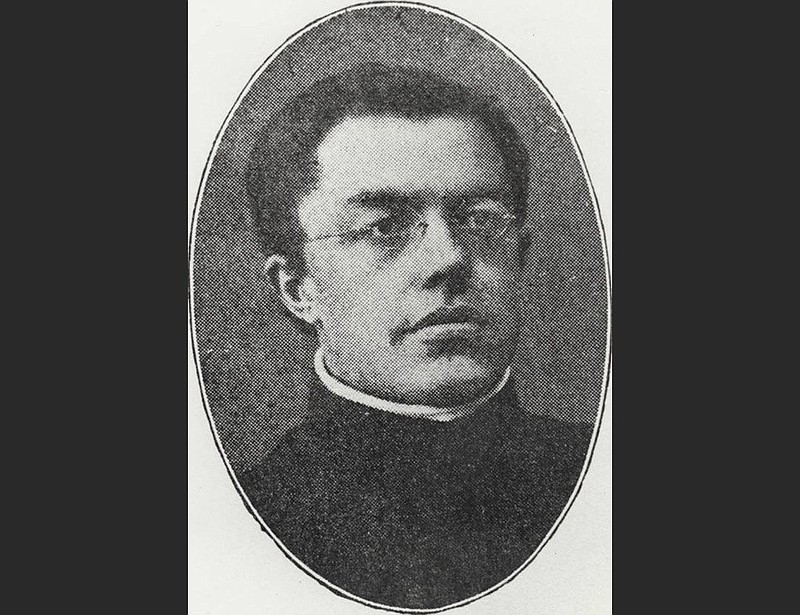There is, in Perry County, a community called New Dixie. Such a name is not so surprising in the rural South, but the people who settled this place arrived long after the Civil War and were of German or Swiss extraction. And the home they created originally bore the name of a medieval Benedictine monk.
Beginning in 1880, immigrants from Germany, Switzerland, and other German-speaking countries began arriving in the area near the small village of Dixie, located near the Arkansas River in eastern Perry County. Other postwar communities of European immigrants were usually recruited by railroad companies, but the families who moved to this area were attracted by the cheap land and moved with little encouragement from the Little Rock and Fort Smith Railroad (LR&FS) or sponsorship of an organization.
Though a few came directly from Europe, most of the families who settled Perry County had lived temporarily in other U.S. states before relocating, many of them coming from Clinton County, Ill. In its June 10, 1881, issue, the Independent Arkansian newspaper noted that 48 families had settled in the new German colony. Bishop Edward Fitzgerald of the Catholic Diocese of Little Rock tried to help the fledgling community by encouraging the railway to promote the area and bring in new immigrants. The bishop also sent his vicar general, the Rev. Aegidius Hennemann, to visit the families and celebrate Mass every six to eight weeks, in addition to convincing the railway to donate 40 acres of land for a church. In 1881, the mission of St. Boniface, named in honor of the patron saint of Germany, was established; it was elevated to parish status in 1884, and the settlement became known as the St. Boniface Colony.
Father Felix Rumpf, Hennemann's successor as spiritual leader for the colony, established a school in 1883, with local merchant and church organist Adolph Benetz serving as its first teacher. In 1890, Father Matthew Saettele negotiated with nuns from St. Scholastica Monastery in western Arkansas to staff the St. Boniface school, a relationship that would continue for over 50 years. Saettele built a house for the sisters to make their stay in the colony more comfortable. He also had a rectory built for himself.
The land, once cleared, was conducive to farming, and the settlers grew corn, cotton, and grapes. In some cases, settlers manufactured wine.
But the various German dialects made communication among the settlers difficult. And malaria was rampant early on. The earliest known burial in the cemetery located next to the church was of 10-year-old Katarina Nutt, who died in 1882, a little over a year after her family emigrated from Balzers, Liechtenstein, to Perry County. The population of Dixie (which included the colony) was estimated to be 100, and the small community had a physician, blacksmith, and general store; by 1888, the population was estimated to be 150. Eventually, the community centered around the church, which was about two and a half miles from Dixie, and the area around the church became known as New Dixie. By 1906, the St. Boniface settlement had 22 German-speaking and two English-speaking families.
On the morning of Jan. 10, 1906, a fire started in the nuns' house and quickly engulfed the structure and spread to the nearby church. Though no lives were lost, the buildings were destroyed with the exception of the church's intricately hand-carved high altar, which had been imported from Germany. The settlers quickly rebuilt, and a new church was dedicated in September 1906.
Although anti-German sentiment grew in Arkansas during World War I and World War II, the settlers experienced relatively few problems. The roads around the settlement remained unpaved, and traveling to and from Conway — just 15 miles away — involved crossing the Arkansas River via ferry. In 1947, a new two-room school was built to replace the older one-room building. The new school building also served as a gathering hall for the community. Three years later, the high school grades consolidated with the nearby Bigelow public schools. The school never had a high attendance; it closed in 1969. The school building was destroyed when it was struck by lightning in 1976.
The original church bells, which had fallen from the bell tower during the 1906 fire, were discovered during a renovation project. The bells were put on display for the centennial anniversary of the church in 2006. Many of the descendants of the original immigrants still live in the area.
— Timothy G. Nutt
This story is adapted by Guy Lancaster from the online Encyclopedia of Arkansas, a project of the Central Arkansas Library System. Visit the site at encyclopediaofarkansas.net.
